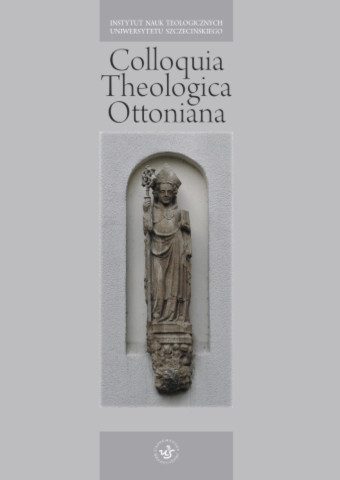
ISSN: 1731-0555
eISSN: 2353-2998
OAI




Issue archive /
2/2014
Mózg i umysł zwierząt
(BRAIN AND MIND OF ANIMALS)
| Authors: |
Wiesław
Dyk
Wydział Humanistyczny Uniwersytetu Szczecińskiego Szczecin |
| Keywords: | sensual soul moral participation awareness speech of animals intentionality |
| Data publikacji całości: | 2014 |
| Page range: | 18 (91-108) |
Abstract
The structure of the human brain can be divided successively stacked layers: the lizard brain (it is possible to breathing, eating and sleeping), dog brain (the ability to create a hierarchical society) and evolutionary novelty as the human brain (the ability to abstract thinking). Human neocortex is thicker than in animals. In addition to the thickness of the neocortex, in humans it is more wrinkled than in animals. Another difference in favor of the human brain is the size and perfection of the developed frontal lobes, which contribute to a larger memory. The frontal lobes make people’s focus on general images, creating general concepts and schemes, but reduce the capacity to perceive details, detailed and unique data, pure sensory stimuli. The perception of detail is appropriate for the animal world. Therefore, the animal EEG is not different from the human, so this is a basis for the adoption thesis that the animals have a conscious thoughts in the context of fragrances, touch and taste. Animals also think fi guratively, but in man there is a higher level of general intelligence. This results in human life, that instead of looking for work fi rst over-generalizations, principles and operating standards. Human thinking relies on language, thinking and animal assisted the (phonetic speech) music issued votes. For verbal and musical language corresponds to part of thebrain called Broca’s center. Development of verbal language has enabled the evolution of the frontal lobes. More specifi cally, the left hemisphere is responsible for language word. Among philosophers, there is discussion on the issue of consciousness is not only depending on the structure of the brain, but also in search of a more detailed conditions. Important place in this quest is “intentionality”, which is a reference between the mind and the real world. Between the mind and objects stand out as constituting an entity referencing content. Thus intentionality and content references form the basis of the search for consciousness in animals. These two components in humans and animals are the cause of automatic response and action. In humans, language expression and language of thought varies greatly. People abide by the outside world into their idea of what you do not do animals. Regardless of the resulting differences is assumed that is the basis of raising intentionality in both animals and humans. However, among animals intentionality and consciousness are consistent, in a human environment, this consistency is only a dream. Due to the convergence of the evolutionary development of the brains of animal and human behavior as the basis, I suggest that instead of “moral objectivity” to accept the thesis “participation animal morality” in morality. Recognize moral principles, forms a system of concepts, but does not set a man. Much has been written about the possibility of the evolution of the human soul with a sensual animal soul. In this article, I give it a discourse on the spirituality of the soul transcends natural.
Download file
Article file
Bibliography
| 1. | Brentano F., Psychologia z empirycznego punktu widzenia, tłum. W. Galewicz, Warszawa 1999 |
| 2. | Chrudzimski A., Teoria intencjonalności i umysłu Johna R. Saerle’a, „Przegląd Filozoficzny – Nowa Seria” 4 (1995) 2. |
| 3. | Dennett D., Natura umysłów, tłum W. Turpolski, Warszawa 1997. |
| 4. | Dennett D.C., The Intentional Stance, Massachusetts 1996. |
| 5. | Dobzansky T., Dziedziczność a natura człowieka, Warszawa 1968. |
| 6. | Dunbar R., Nowa historia ewolucji człowieka, tłum. B. Kucharczyk, Kraków 2014. |
| 7. | Dyk W., Geneza duszy ludzkiej w kontekście teorii ewolucji, w: P. Moskal (red.), Metafizyczne i antropologiczne założenia filozofi i religii. Religia i mistyka, t. 5, Lublin 2007. |
| 8. | Fouts R., Tunel Mills S., Najbliżsi krewni. Jak szympansy uświadomiły mi, kim jesteśmy, tłum. A. Jankowski, Poznań 1999. |
| 9. | Gray M.P. i inni, The Music of Nature and the Nature of Music, „Science” 291 (2001). |
| 10. | Johnson C., Zrozumieć zwierzęta. Wykorzystanie tajemnic autyzmu do rozszyfrowania zachowań zwierząt, tłum. K. Puławski, Poznań 2011. |
| 11. | Louie K., Wilson M.A., Temporally Structured Replay of Awake Hippocampal Enamble Activity During Rapid Eye Movement Sleep, „Neuron” 29 (2001) 1. |
| 12. | Saerle J.R., Intentionality. An Essay In the Phylosophy of Mind, Cambridge 1993. |
| 13. | Searle J.R., Umysł. Krótkie wprowadzenie, tłum. J. Karłowski, Poznań 2010. |
| 14. | Trehub S., Music and Infants, New York 2005. |
| 15. | de Waal F., Małpy i filozofowie. Skąd pochodzi moralność?, tłum. B. Brożek, M. Furman, Kraków 2013. |
| 16. | Ward P., Hipoteza Medei. Czy życie na Ziemi zmierza do samounicestwienia?, tłum. M. Betlej, Warszawa 2010 |